Light and flaky, this all-butter Flaky Pie Crust is full of melt-in-your-mouth butter flavor. Tender yet very crisp, it makes the perfect crust for all of your favorite pies.
While pie dough that contains shortening is a little easier to work with and holds its shape better during baking, I prefer all-butter pie crusts for their superior flavor, flakiness, and crispness. I also try to avoid vegetable shortening when possible.
One of the key tips for success in making a pie crust is keeping the ingredients cold. Combine the flour and salt in a gallon-size ziplock bag and freeze for at least 30 minutes. Divide the butter into 2 portions. Wrap each portion in plastic wrap. Put the larger portion in the refrigerator and the smaller portion in the freezer for at least 30 minutes. Before mixing, prepare a glass of ice water.
Place the flour mixture in the food processer and pulse a few times until well combined. Add the larger amount of butter cubes and process until the mixture resembles coarse meal, about 20 seconds.
Add the remaining frozen cubes of butter and pulse until they are the size of small peas.
Add the vinegar and lowest amount of ice water and pulse 6 times.
Test the mixture by pressing a small amount between your fingers. If it holds together, it doesn't need the extra water. If it doesn't hold together, add the remaining water and pulse 3 times.
The mixture will not come together in a mass in the processor. It will be in smaller pieces that come together when pressed.
Working quickly and gently, press the dough together and form into a disk for a single crust or 2 disks for a double crust pie. Wrap in plastic wrap and refrigerate for at least 45 minutes and preferably overnight.
My favorite pie dish for a successful pie crust is the Pyrex Bakeware 9-inch pie plate. The winner in Cooks Illustrated's pie plate test, the thing I love most about this pie dish is the wide rim that supports the fluted edge so it doesn't slide into the pie or out of the dish all together.
When you are ready to roll out the pie crust, remove the dough from the refrigerator. Allow it to soften on the counter for 10 minutes. Lay out 2 pieces of overlapping plastic wrap on the counter and lightly dust with flour.
Put the dough disk on the plastic wrap and cover with 2 more overlapping pieces of plastic wrap. Working quickly, roll out the dough evenly into a 13-inch circle for a 9-inch single-crust pie. Roll 2 12-inch circles for a double crust pie. The dough should be about ⅛ of an inch thick.
I find that I get the most circular shape when I roll outwards from the middle, rotating about 45 degrees after each roll. If I can't rotate the plastic wrap, I just rotate my direction of rolling, keeping the plastic wrap stable on the counter. For example, if the first roll is towards the north, the next roll is towards north-east. The next roll would be towards east, then south-east, then south, continuing around the circle.
Using a 13-inch cardboard circle as a guide for a single pie crust (12-inches for double-crust), carefully trim the dough into a circle.
Ease the dough into the pie dish, being careful not to stretch it. The overlap should be the same on all sides.
For a single-crust pie, as shown, fold under the excess dough and make an even rim of dough.
Flute or crimp the edge as desired, either by pinching at even intervals, pressing with a fork, or pressing between two fingers and a knuckle. The method I have used here is to press the dough with the index finger on the inside of the rim between the thumb and middle finger on the outside of the rim.
Refrigerate the shell for at least an hour or stick it in the freezer for about 30 minutes. This will help the fluted edge keep its shape during baking.
Preheat the oven to 425 degrees F for 25 minutes before baking.
Line the pastry with parchment paper and fill with pie weights. I keep a bag of beans and rice that I use specially for this purpose.
Bake the pie crust on a baking sheet, on the bottom rack of the oven, for about 20 minutes until the edges are set. Don't use an insulated cookie sheet or the bottom of the pie crust will be undone when the edges are brown. (Learned that the hard way!)
Carefully lift out the parchment and the weights. Prick the bottom and sides with a fork to prevent bubbles. Bake for another 10 minutes until the crust is golden brown.
A double crust pie is a little easier as there is no need to line, weight, and blind-bake the crust. After easing the crust into the pie dish, trim the excess to ½- inch past the rim. After filling the pie, brush this edge with a little water. Gently place the top crust over the filling and fold the edges under the excess of the bottom crust. Press into an even rim of dough and flute or crimp as desired. Refrigerate the pie for an hour to help the fluted edge keep its shape during baking. Cut slits for steam vents just before baking.
Print
How to Make a Flaky Pie Crust - Step by Step Photos
Ingredients
For a 9-inch single crust:
- 8 tablespoons cold, unsalted butter cut into ¾ inch cubes (4oz, 113 g)
- 1 ⅓ cups all-purpose flour (6.5oz, 184g)
- ¼ teaspoon salt
- ⅛ teaspoon baking powder
- 2 ½ to 3 ½ tablespoons ice water (1.3 to 1.7oz, 37 to 52g)
- 1 ½ teaspoons cider vinegar (,25oz, 7g)
For a 9-inch double crust pie:
- 14 tablespoons cold, unsalted butter cut into ¾ inch cubes (7oz, 200g)
- 2 ¼ cups all-purpose flour (11.25oz, 320g)
- ¼ plus ⅛ teaspoon salt
- ¼ teaspoon baking powder
- 5 to 7 tablespoons ice water (2,6 to 3.6oz, 74 to 103g)
- 1 tablespoon cider vinegar (.5oz, 14g)
Instructions
Divide the butter cubes into two portions:
- For a single crust: 5 tablespoons and 3 tablespoons (2.5 and 1.5oz)
- For a double crust: 9 tablespoons and 5 tablespoons (4.5oz and 2.5oz)
- Wrap each portion in plastic wrap. Put the larger portion in the refrigerator and the smaller portion in the freezer for at least 30 minutes.
- Place the flour, salt, and baking powder in a gallon size ziplock bag and put in the freezer for at least 30 minutes.
Make the dough:
- Place the flour mixture in the food processer and pulse a few times until well combined. Add the larger amount of butter cubes and process until the mixture resembles coarse meal, about 20 seconds.
- Add the remaining frozen cubes of butter and pulse until they are the size of small peas.
- Add the vinegar and lowest amount of ice water and pulse 6 times.
- Test the mixture by pressing a small amount between your fingers. If it holds together, it doesn't need the extra water. If it doesn't hold together, add the remaining water and pulse 3 times.
- The mixture will not come together in a mass in the processor. It will be in smaller pieces that come together when pressed.
- Working quickly and gently, press the dough together and form into a disk for a single crust or 2 disks for a double crust pie. Wrap in plastic wrap and refrigerate for at least 45 minutes and preferably overnight.
Rolling the dough:
- When you are ready to roll out the pie crust, remove the dough from the refrigerator. Allow it to soften on the counter for 10 minutes. Lay out 2 pieces of overlapping plastic wrap on the counter and lightly dust with flour.
- Set dough disk in the middle of the plastic and cover with 2 more overlapping pieces of plastic wrap. Working quickly, roll out the dough evenly into a 13-inch circle for a 9-inch single-crust pie. Roll 2 12-inch circles for a double crust pie. The dough should be about ⅛ of an inch thick.
- I find that I get the most circular shape when I roll outwards from the middle, rotating about 45 degrees after each roll. If I can't rotate the plastic wrap, I just rotate my direction of rolling, keeping the plastic wrap stable on the counter. For example, if the first roll is towards the north, the next roll is towards north-east. The next roll would be towards east, then south-east, then south, continuing around the circle.
- Using a 13-inch cardboard circle as a guide for a single pie crust (12-inches for double-crust), carefully trim the dough into a circle.
- Ease the dough into the pie dish, being careful not to stretch it. The overlap should be the same on all sides.
- For a single-crust pie fold under the excess dough and make an even rim of dough. Flute or crimp the edge as desired.
- Refrigerate the shell for at least an hour or stick it in the freezer for about 30 minutes.
Baking the crust:
- Preheat the oven to 425 degrees F for 25 minutes before baking.
- Line the pastry with parchment paper and fill with pie weights.
- Bake on a baking sheet, on the bottom rack of the oven, for about 20 minutes until the edges are set.
- Carefully lift out the parchment and the weights. Prick the bottom and sides with a fork to prevent bubbles. Bake for another 10 minutes until the crust is golden brown.
For a double crust pie:
- After easing the crust into pie dish, trim the excess to ½- inch past the rim.
- After filling the pie, brush this edge with a little water. Gently place the top crust over the filling and fold the edges under the excess of the bottom crust. Press into an even rim of dough and flute or crimp as desired.
- Refrigerate the pie for an hour to help the fluted edge keep its shape during baking.
- Cut slits for steam vents just before baking.
Recipe adapted from The Pie and Pastry Bible by Rose Levy Beranbaum.


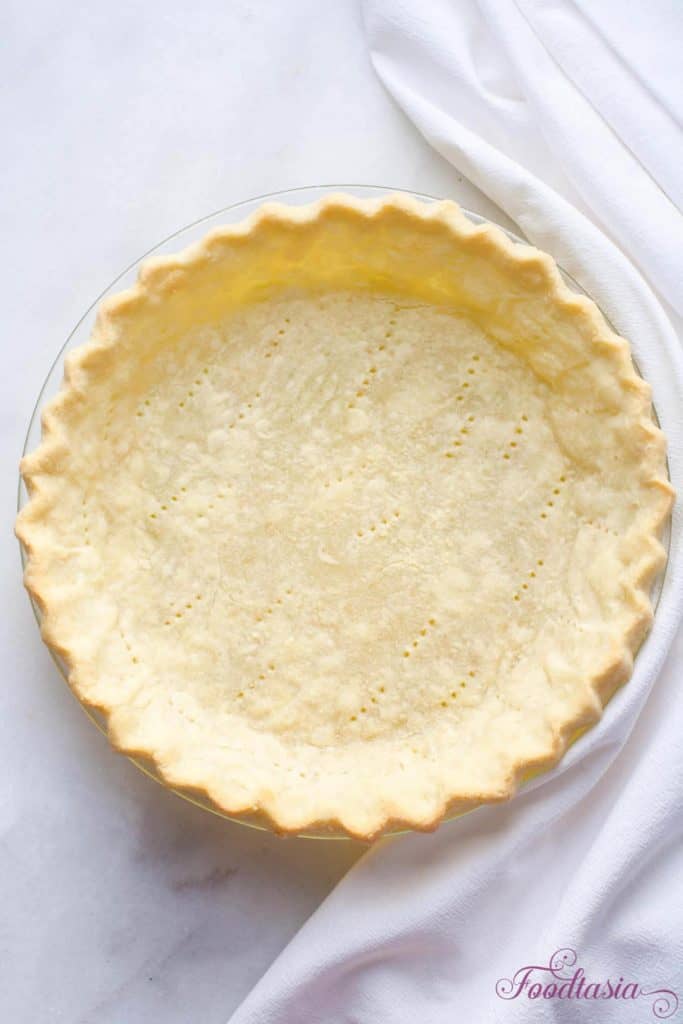
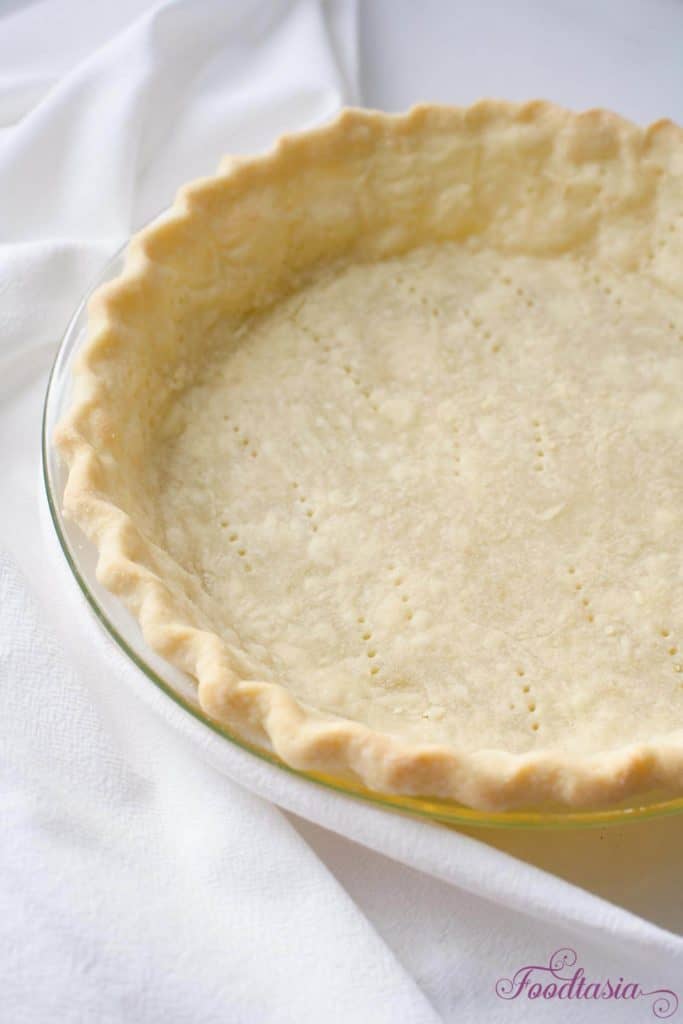
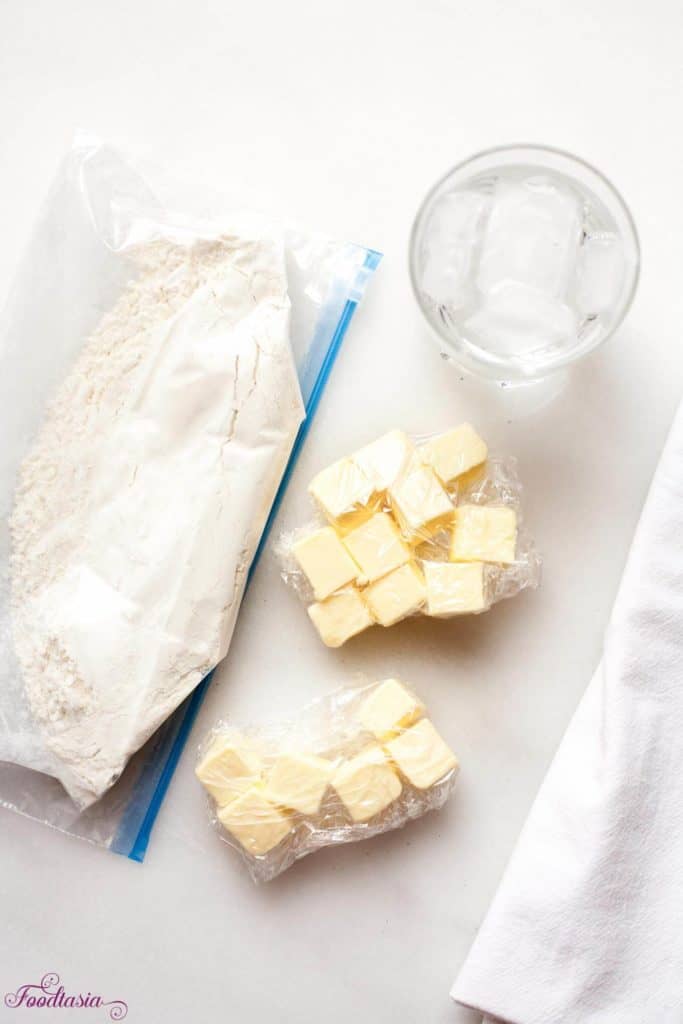
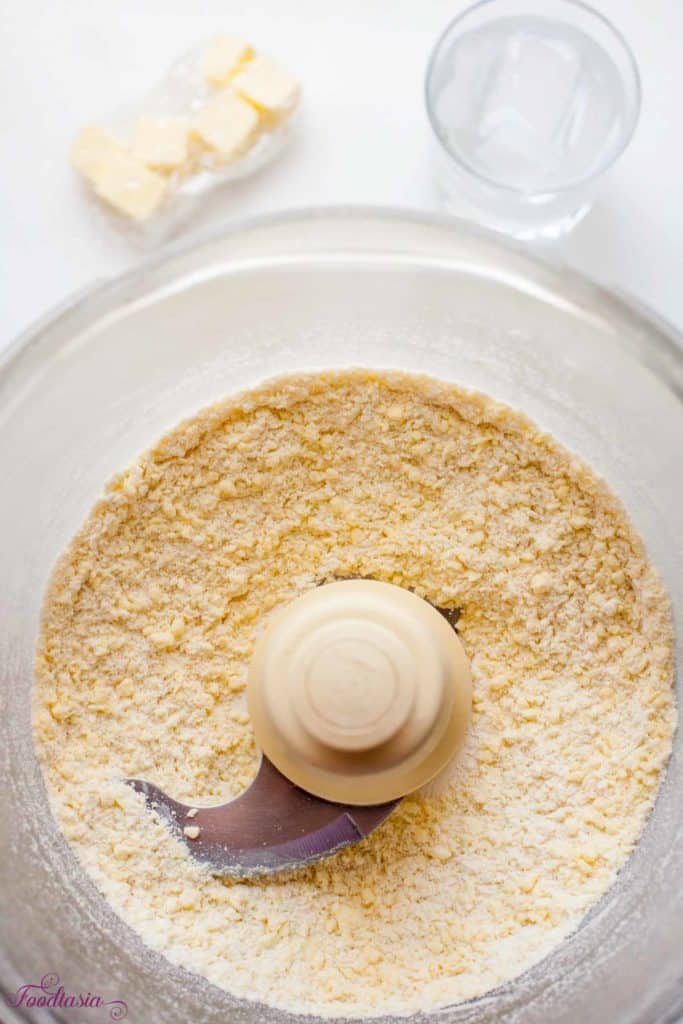
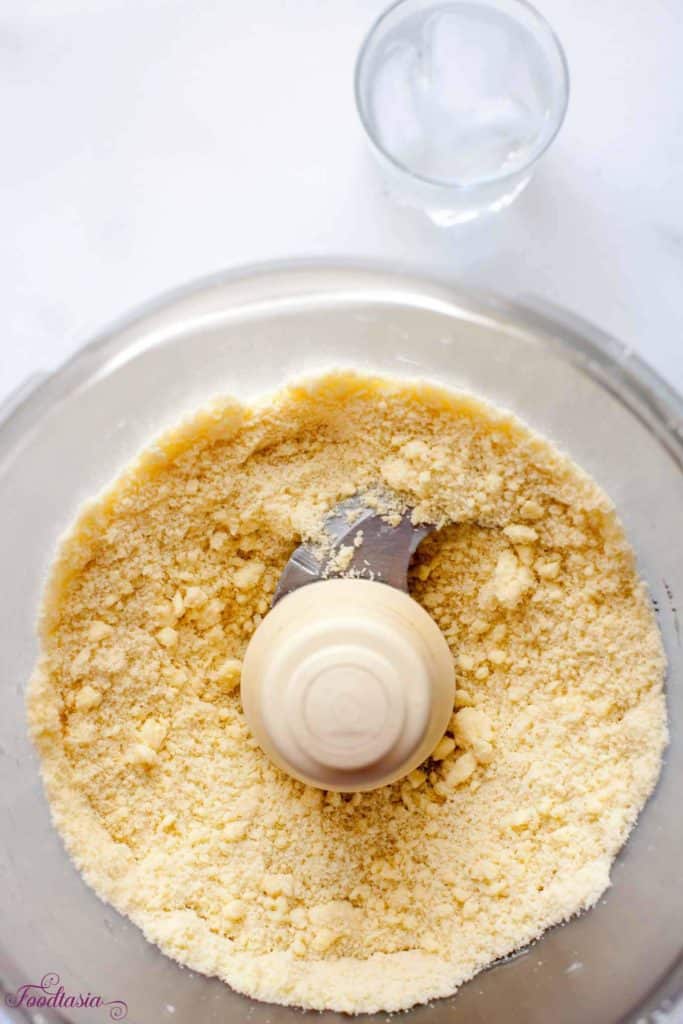
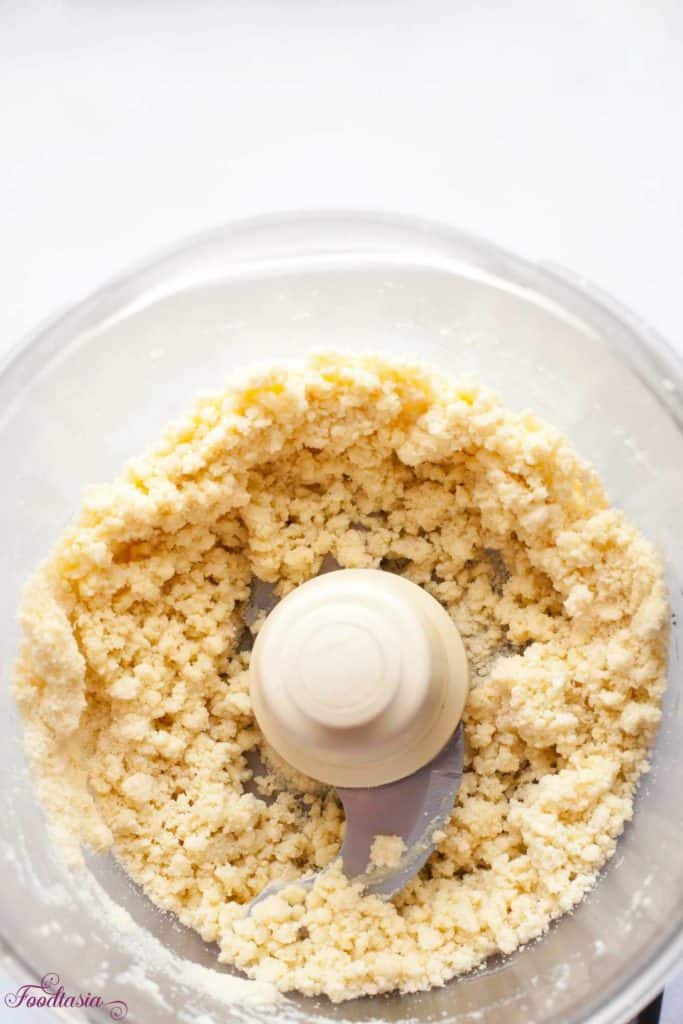
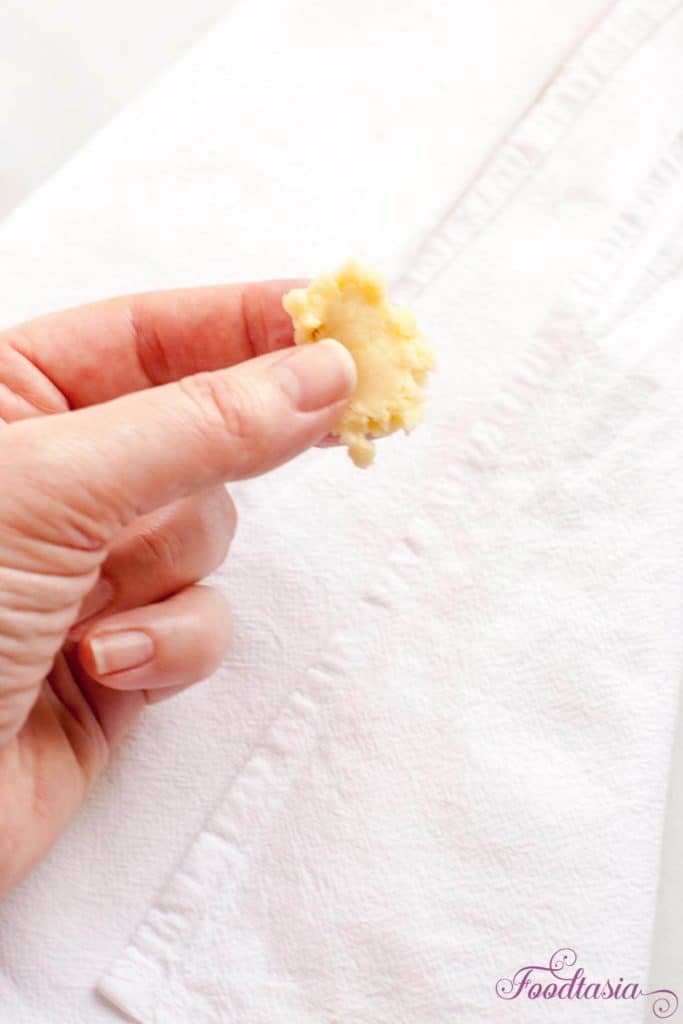
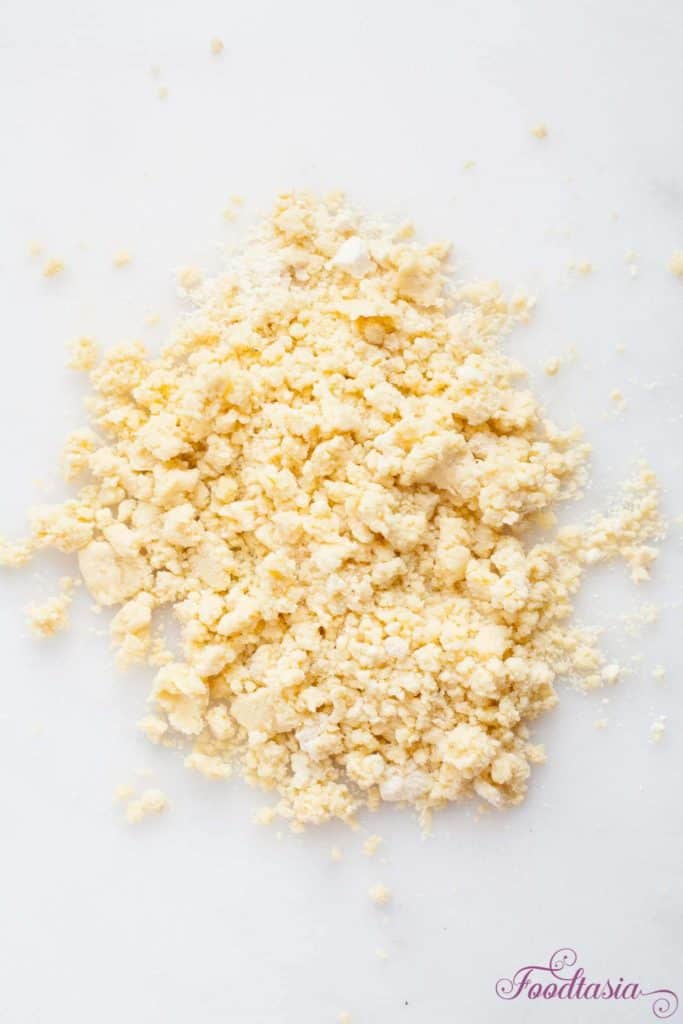
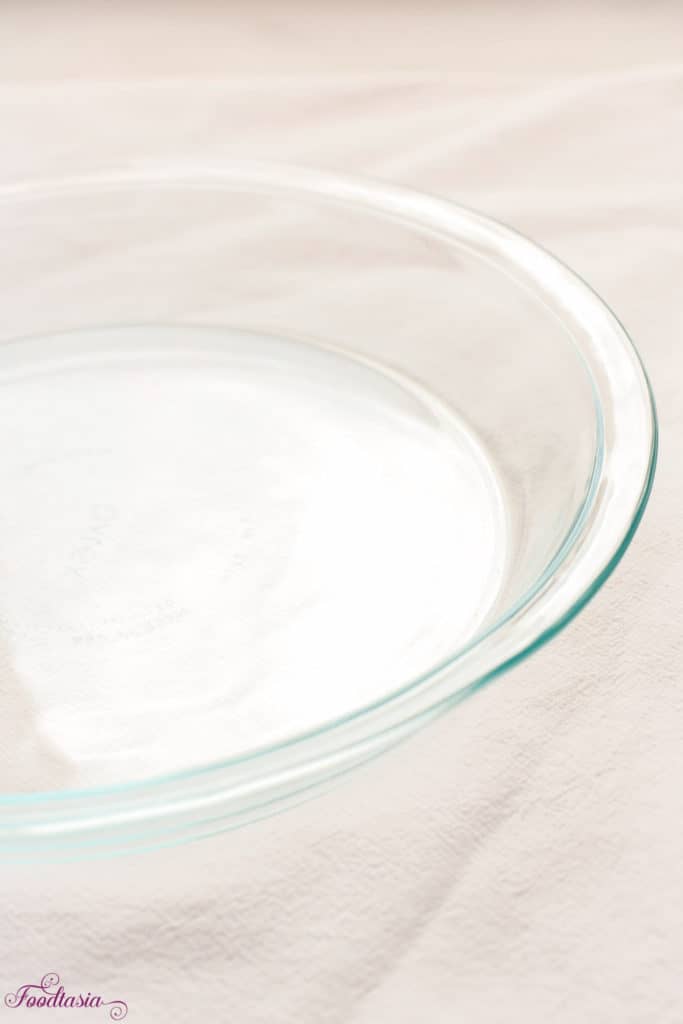
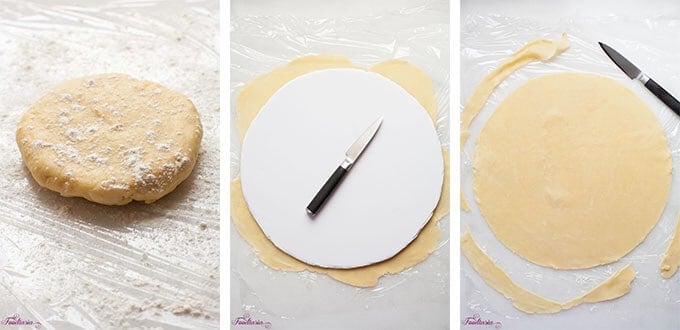
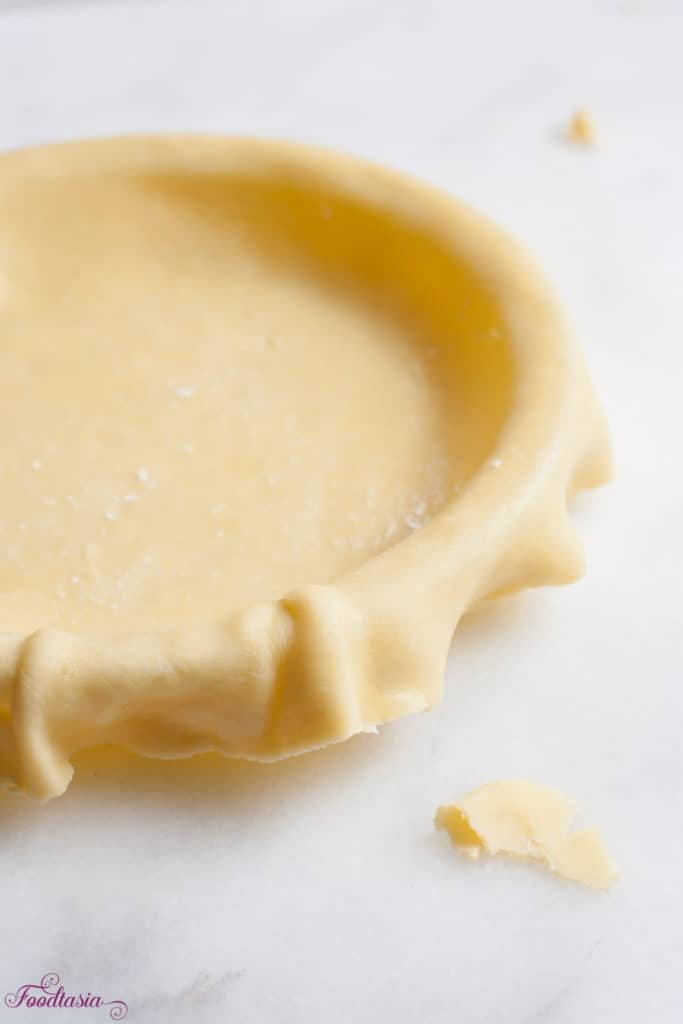
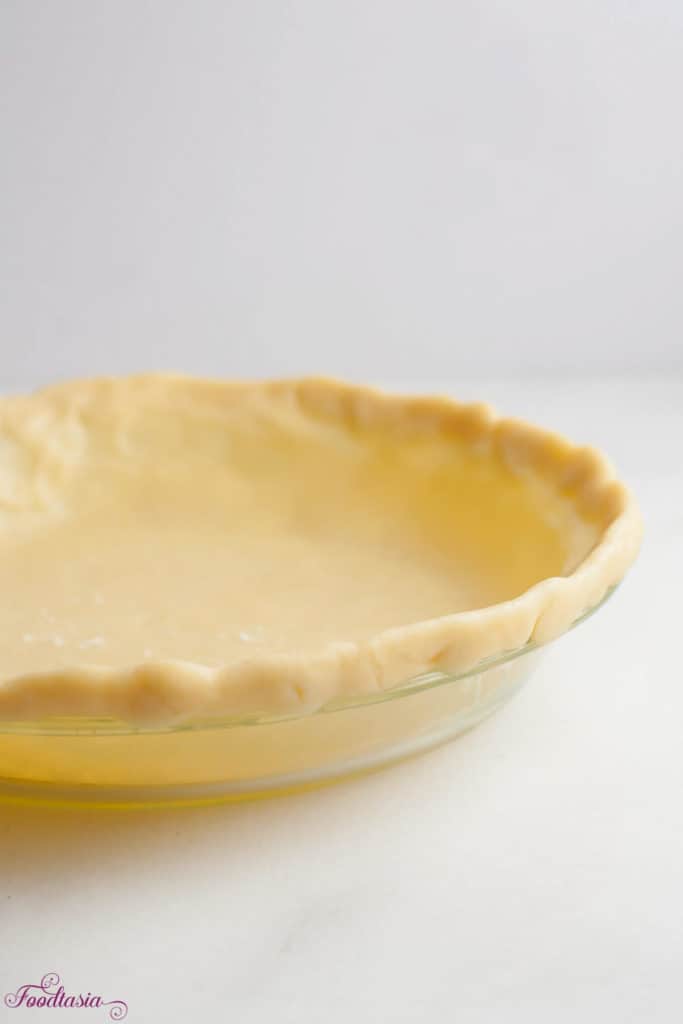
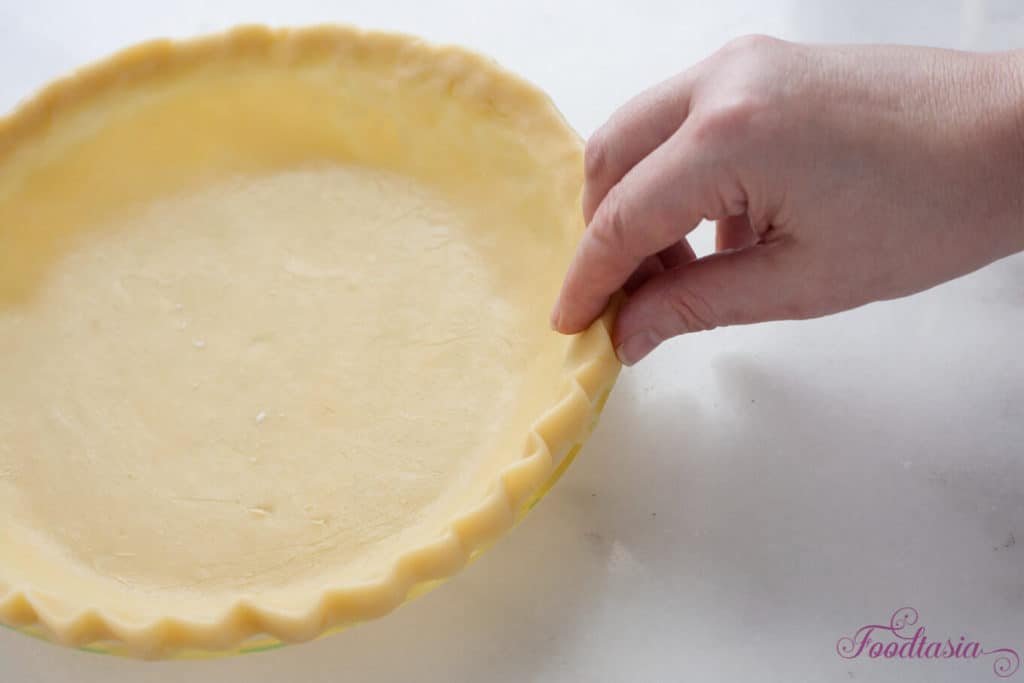
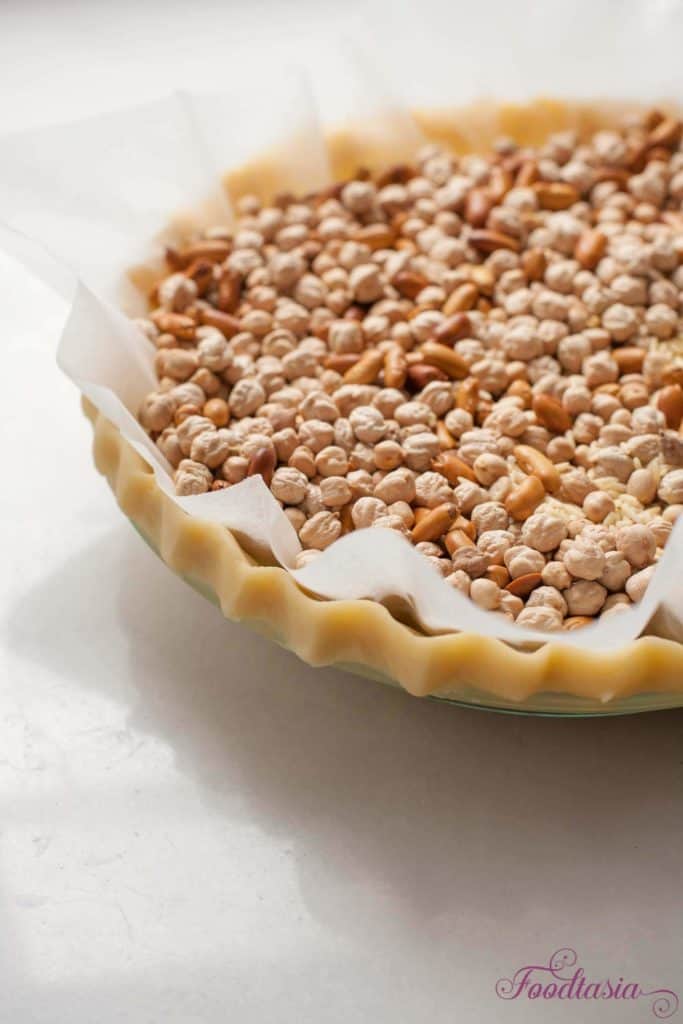
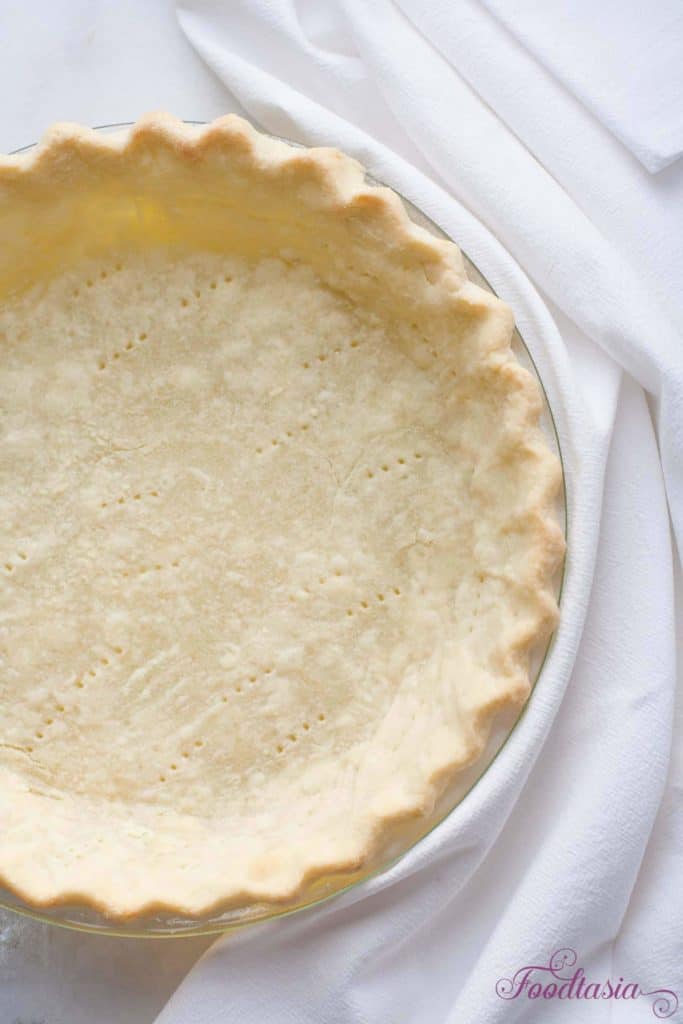

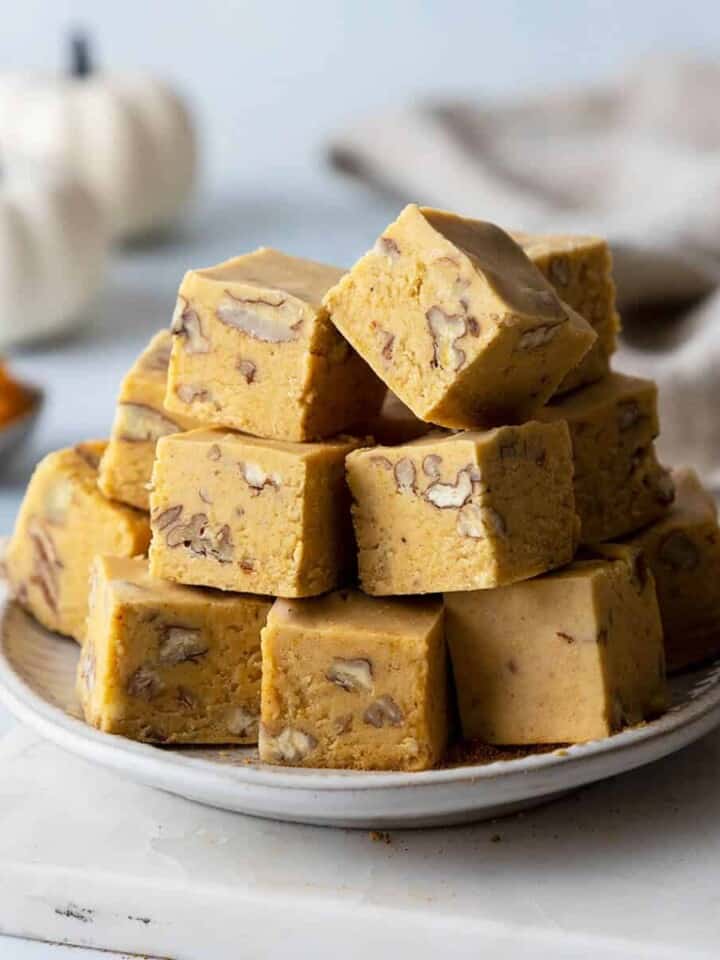

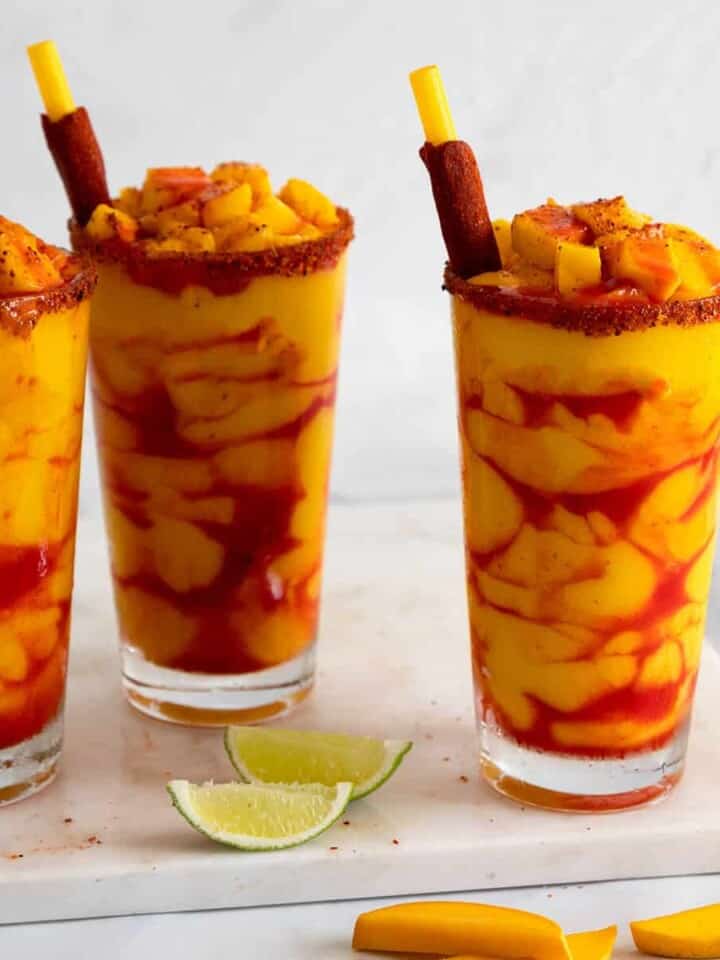

Leave a Reply